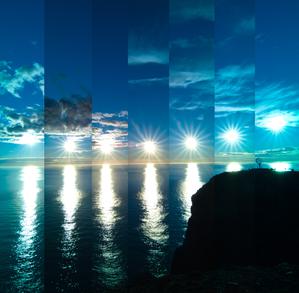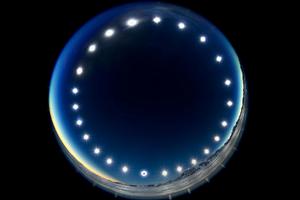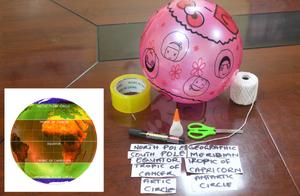Glossary term: Cercle polaire
Description: Les cercles polaires sont des lignes de latitude sur la Terre. Le cercle polaire situé à 66°33′48,8″ N est appelé cercle polaire arctique et le cercle polaire situé à 66°33′48,8″ S est appelé cercle polaire antarctique. En raison de l'inclinaison de l'axe de rotation de la Terre, les régions situées au nord du cercle polaire arctique et au sud du cercle polaire antarctique connaissent des "nuits polaires" pendant leur hiver et des "jours polaires" pendant leur été. Au cours d'une nuit polaire, le Soleil est sous l'horizon pendant plus de 24 heures et cette période d'obscurité peut durer des mois. Pendant un jour polaire, le Soleil est au-dessus de l'horizon pendant plus de 24 heures et cela peut durer des mois. Les jours et les nuits polaires sont plus longs près des pôles. Les nuits polaires se produisent avant et après le solstice d'hiver de chaque région polaire, tandis que les jours polaires se produisent avant et après le solstice d'été.
Related Terms:
See this term in other languages
Term and definition status: The original definition of this term in English have been approved by a research astronomer and a teacher The translation of this term and its definition is still awaiting approval
The OAE Multilingual Glossary is a project of the IAU Office of Astronomy for Education (OAE) in collaboration with the IAU Office of Astronomy Outreach (OAO). The terms and definitions were chosen, written and reviewed by a collective effort from the OAE, the OAE Centers and Nodes, the OAE National Astronomy Education Coordinators (NAECs) and other volunteers. You can find a full list of credits here. All glossary terms and their definitions are released under a Creative Commons CC BY-4.0 license and should be credited to "IAU OAE".
If you notice a factual or translation error in this glossary term or definition then please get in touch.
Related Media
When the Sun Bounces
Credit: Milos Obert/IAU OAE (CC BY 4.0)
License: CC-BY-4.0 Creative Commons Attribution 4.0 International (CC BY 4.0) icons
The Eclipse Clock-Eclipse on a Polar Day
Credit: Stephanie Ziyi Ye/IAU OAE (CC BY 4.0)
License: CC-BY-4.0 Creative Commons Attribution 4.0 International (CC BY 4.0) icons
Related Activities
Discover Earth's climate with a balloon
astroEDU educational activity (links to astroEDU website) Description: Discover the secrets of Earth's climate zones with a hands-on experience
License: CC-BY-4.0 Creative Commons Attribution 4.0 International (CC BY 4.0) icons
Age Ranges:
8-10
, 10-12
Education Level:
Middle School
, Primary
Areas of Learning:
Fun activity
, Guided-discovery learning
, Modelling
, Observation based
, Project-based learning
, Social Research
Costs:
Low Cost
Duration:
45 mins
Group Size:
Group
Skills:
Asking questions
, Constructing explanations
, Developing and using models











